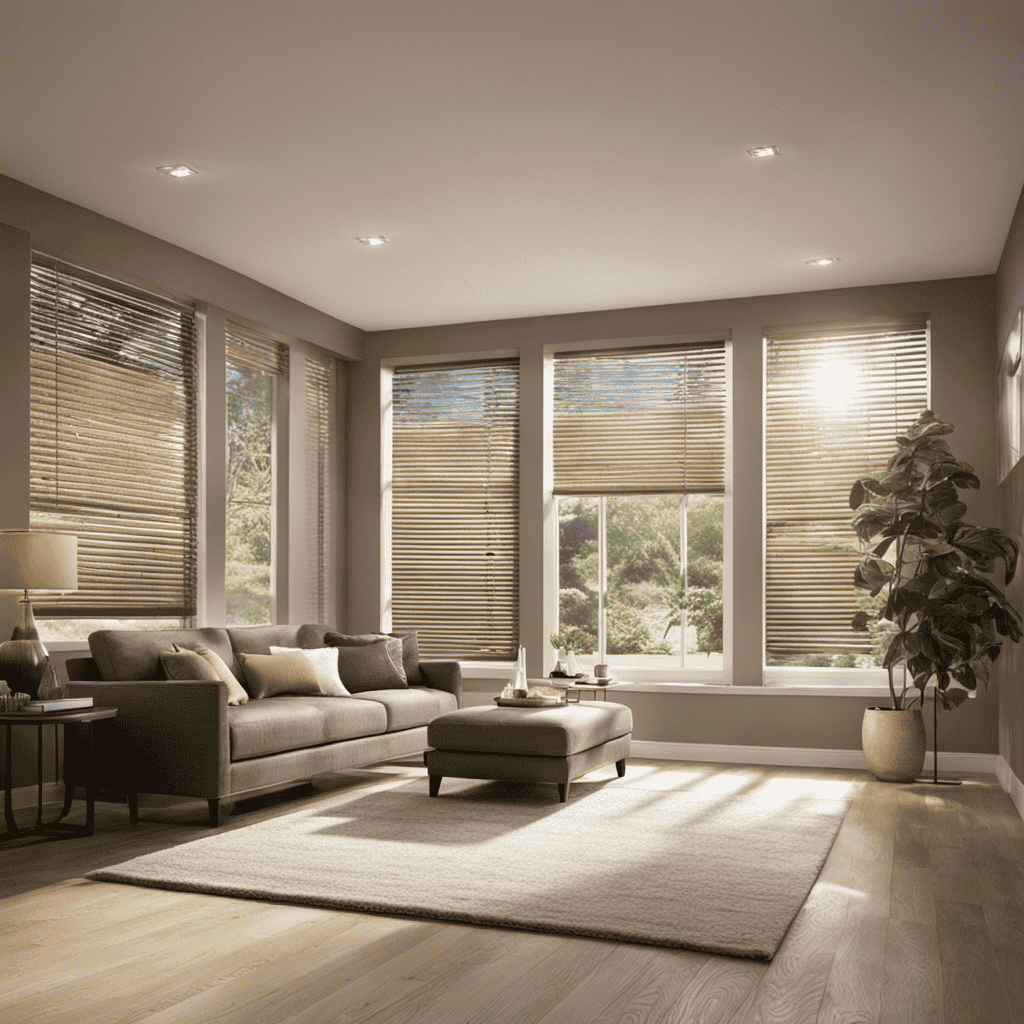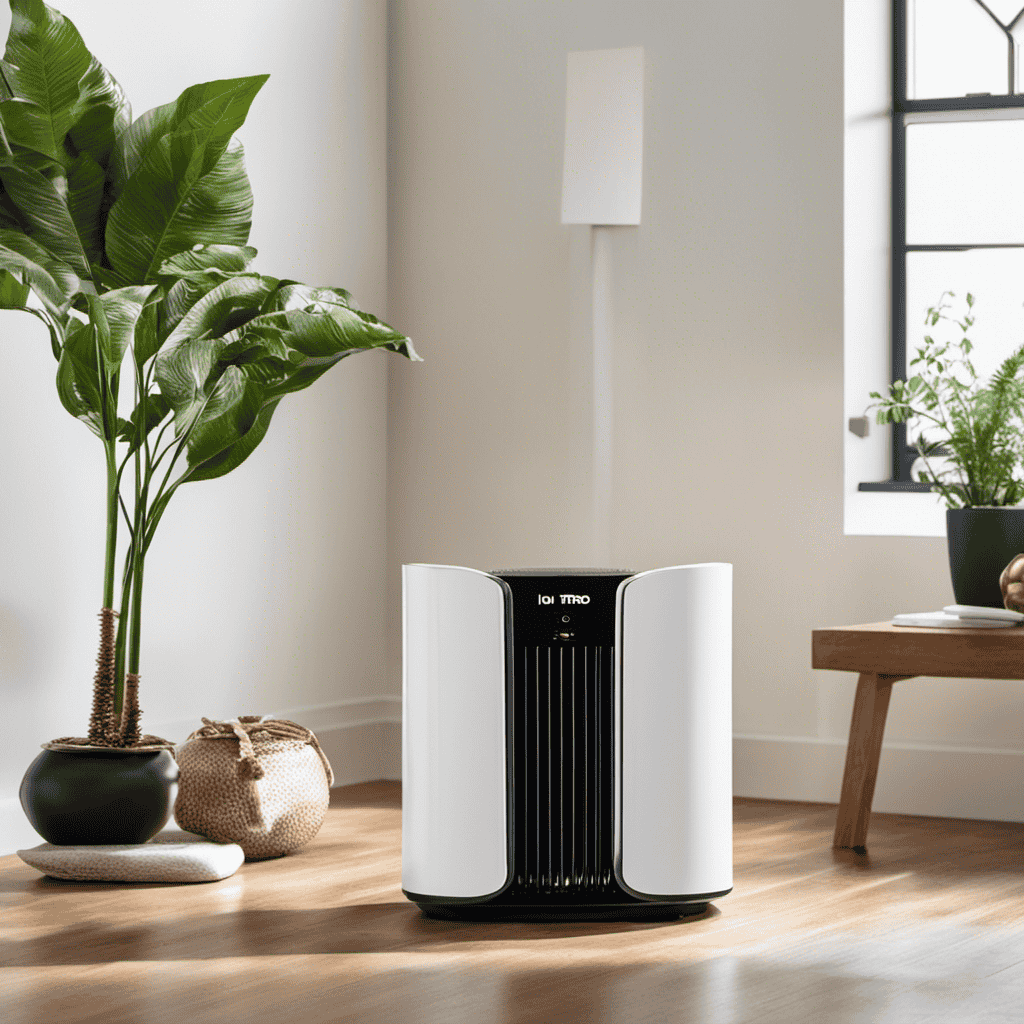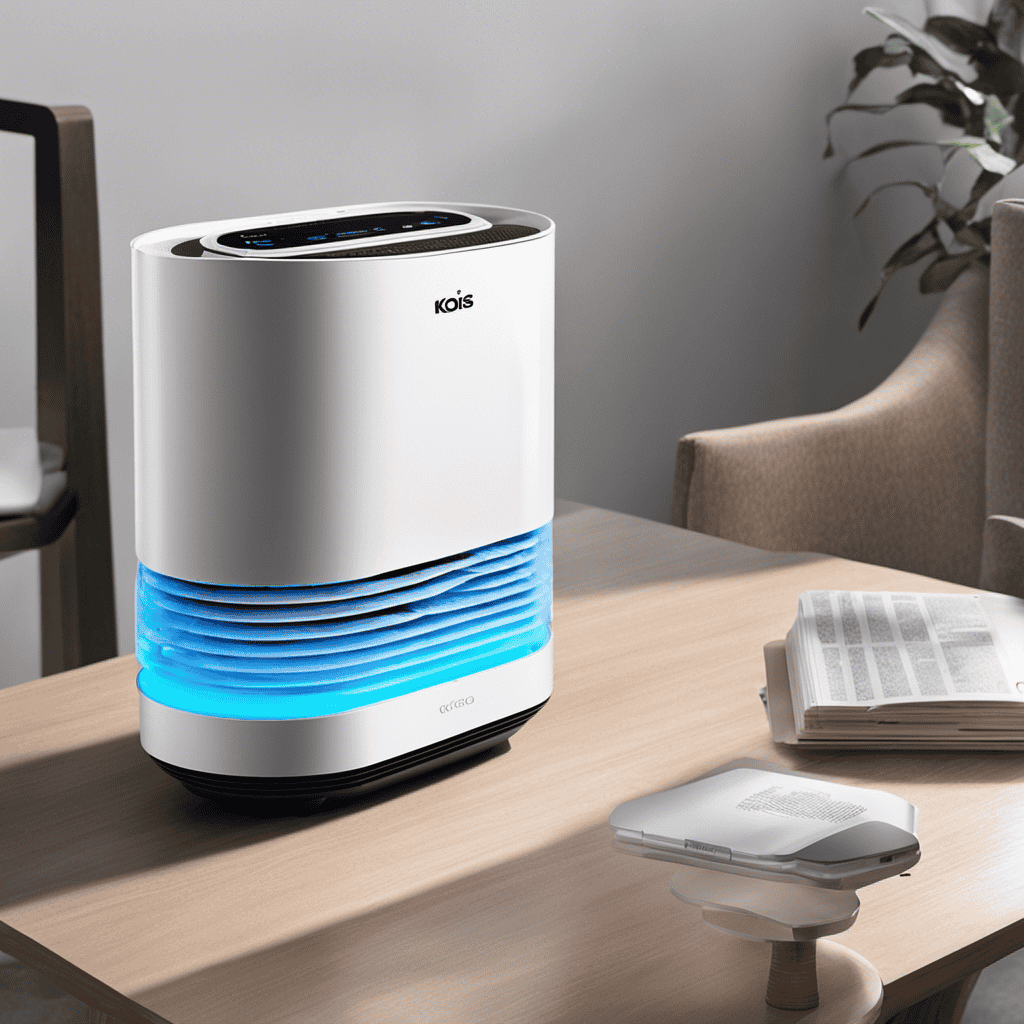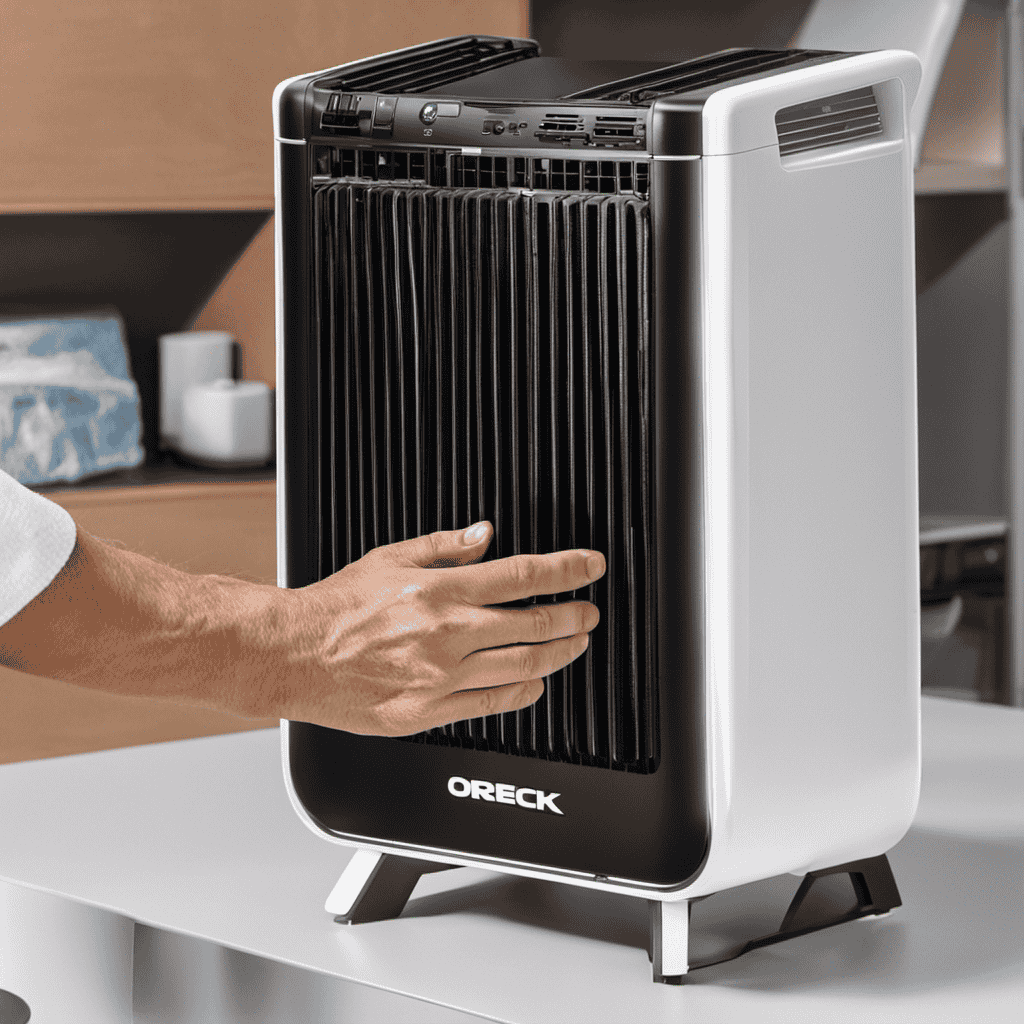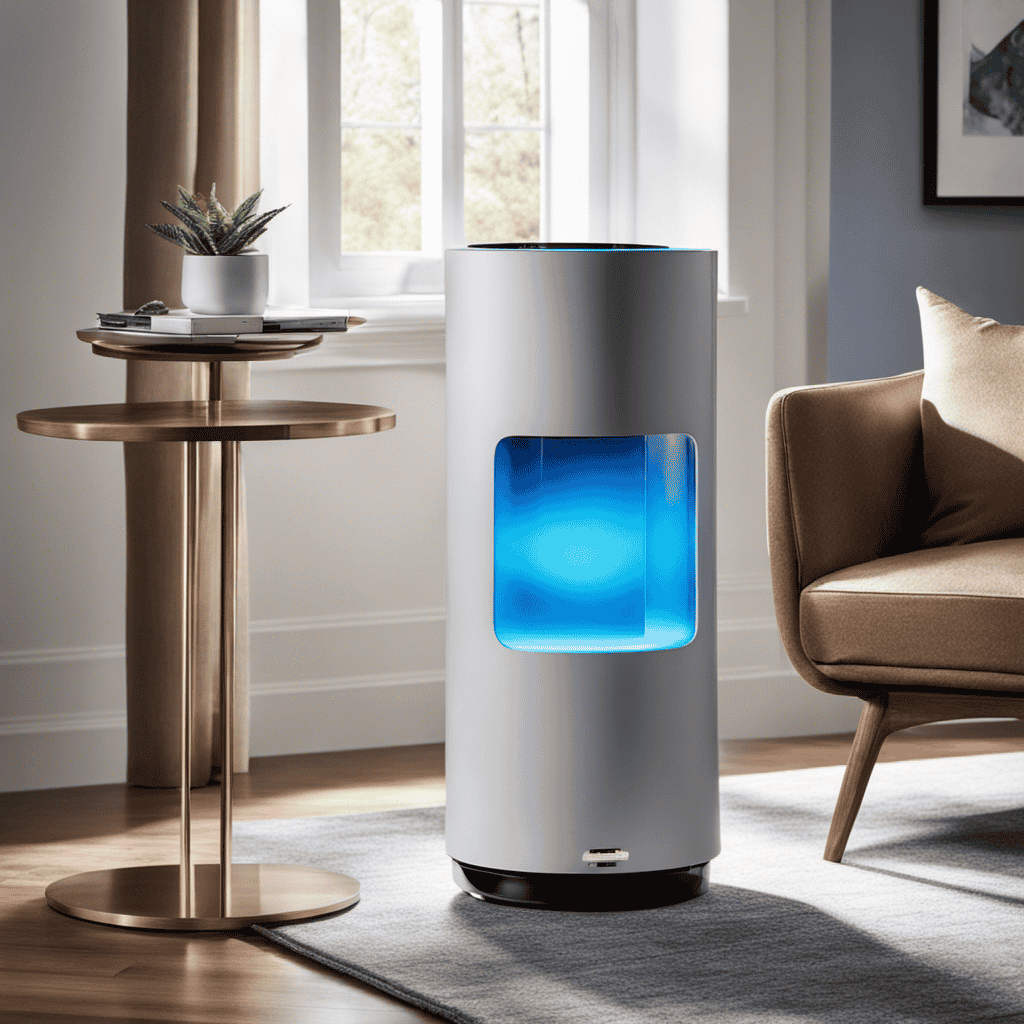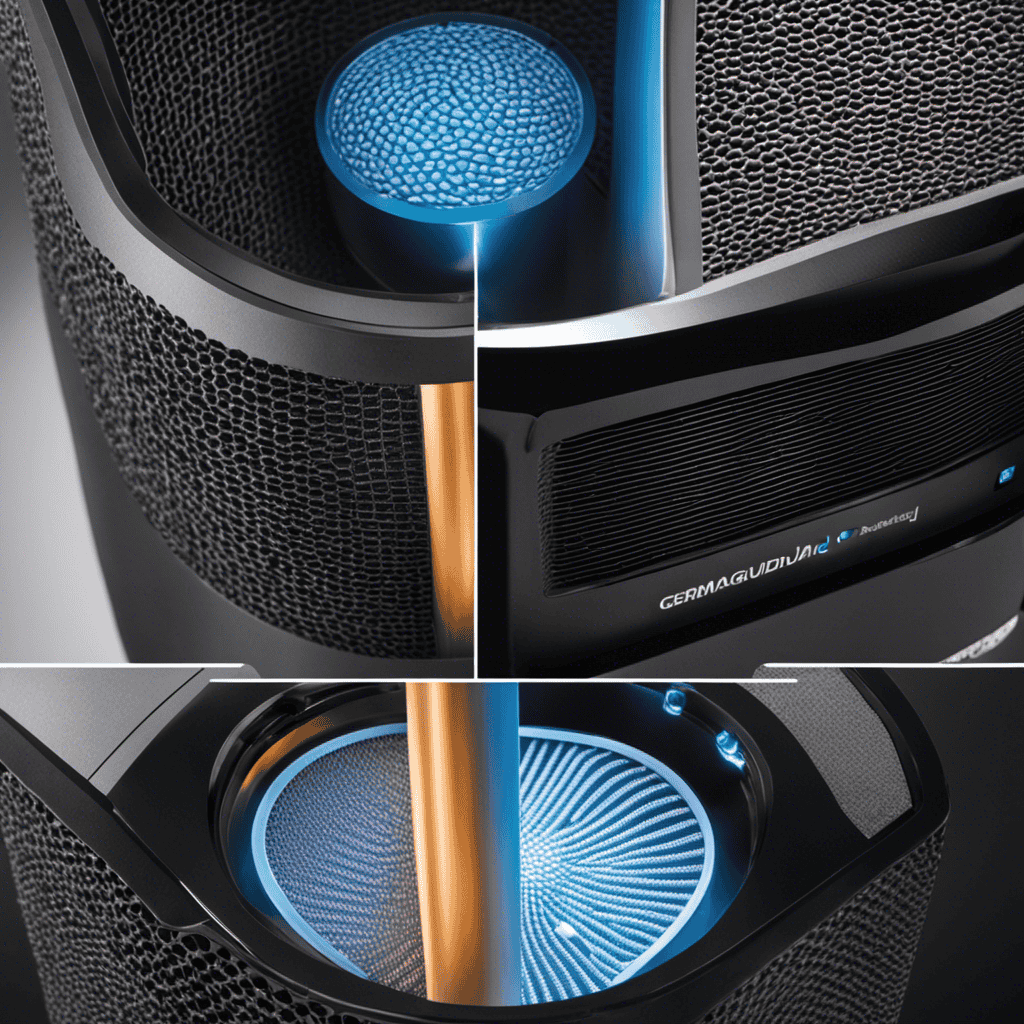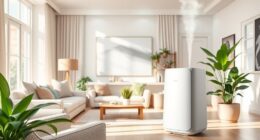I understand your skepticism about whether your air purifier is actually working. Allow me to reassure you and put your mind at ease.
In this article, we will explore the indicators that show your air purifier is working effectively. We’ll discuss visible signs of cleaner air, reduced allergens and irritants, odor elimination, and decreased respiratory symptoms.
Plus, we’ll highlight the importance of regular maintenance and filter replacement.
So, let’s dive in and discover how to know for sure that your air purifier is working.
Key Takeaways
- Reduced presence of dust particles, allergens, odors, and airborne bacteria and viruses are indicators that an air purifier is working effectively.
- Visible signs of cleaner air include less frequent settling of dust and allergens on surfaces, decreased presence of pet dander and hair, and reduction in odors like cooking smells or cigarette smoke.
- Reliable air purifiers use techniques like HEPA filters, activated carbon filters, and UV-C light to detect and filter out airborne pollutants.
- The use of air purifiers leads to a cleaner breathing environment, reducing the risk of respiratory problems like asthma and allergies, and enhancing overall health and well-being.
Air Quality Improvement Indicators
You can tell your air purifier is working by noticing the improved air quality indicators such as reduced dust particles and fresher air. Air purifier effectiveness measurement is based on the reduction of airborne contaminants and the overall improvement in indoor air quality.
One of the primary air purifier performance indicators is the reduction of dust particles in the air. A functioning air purifier will effectively capture and remove dust particles, leaving the air cleaner and fresher. Additionally, you may notice a decrease in allergens such as pet dander or pollen, which can lead to improved respiratory health. Other indicators of air purifier effectiveness include a decrease in odors and a reduction in airborne bacteria and viruses. These measurable improvements in air quality are clear signs that your air purifier is working effectively.
With improved air quality indicators, it’s important to also look for visible signs of cleaner air.
Visible Signs of Cleaner Air
There’s a noticeable difference in the air quality when the purifier is running. Here are some visible signs that indicate cleaner air:
- Dust and allergens settle less frequently on surfaces.
- There is a decrease in the presence of pet dander and hair.
- The presence of odors, such as cooking smells or cigarette smoke, is reduced.
- Allergy and asthma symptoms improve, indicating a decrease in airborne pollutants.
Air purifiers work by detecting and filtering out airborne pollutants. They use various techniques like HEPA filters, activated carbon filters, and UV-C light to effectively remove contaminants from the air.
To measure the effectiveness of an air purifier, you can use air quality monitors that detect and measure particulate matter and other pollutants. These devices provide real-time data on air quality, allowing you to assess the impact of your purifier.
Reduced Allergens and Irritants
When it comes to creating a cleaner breathing environment and improving air quality, there are several key points to consider.
Firstly, having a reliable air purifier can significantly reduce the presence of allergens and irritants in the air, making it safer to breathe.
Secondly, improved air quality can lead to numerous health benefits, such as reduced respiratory issues and allergies.
Lastly, by investing in measures to improve air quality, we’re not only prioritizing our own well-being but also contributing to the overall health of our environment.
Cleaner Breathing Environment
Having an air purifier can create a cleaner breathing environment in your home. Indoor air pollution is a significant issue that can lead to various health problems. However, with an air purifier, you can experience several health benefits.
Here are some reasons why having an air purifier is beneficial:
- Removes harmful pollutants and allergens from the air
- Reduces the risk of respiratory problems such as asthma and allergies
- Helps eliminate unpleasant odors and chemicals
- Improves overall air quality for better health and well-being
Improved Air Quality
Using an air purifier can enhance the quality of the air in your home, making it cleaner and safer to breathe. Not only does this improve your overall health, but it also has several other benefits. One of the main health benefits of using an air purifier is that it helps to remove allergens such as dust, pollen, and pet dander from the air. This can greatly reduce allergy symptoms and improve respiratory health. Additionally, an air purifier can remove harmful pollutants and toxins from the air, which can help prevent respiratory illnesses and other health issues. Furthermore, breathing cleaner air can lead to increased energy levels. When your body doesn’t have to work as hard to filter out pollutants, you can feel more energized and focused throughout the day.
| Health Benefits | Increased Energy Levels |
|---|---|
| Removes allergens from the air | Boosts respiratory health |
| Removes harmful pollutants and toxins | Helps prevent respiratory illnesses |
| Reduces allergy symptoms | Increases overall energy levels |
| Improves respiratory health | Enhances focus and productivity |
Odor Elimination and Fresh Scent
You can tell your air purifier is working when it’s able to eliminate odors and leave a fresh scent in the air. Here are some ways to determine if your air purifier is efficiently eliminating odors and providing a fresh scent:
- Check for a reduction in strong smells, such as cooking odors or pet odors.
- Notice if the air in your home smells cleaner and fresher after running the air purifier.
- Observe if the purifier effectively removes lingering smells from smoke or chemicals.
- Pay attention to any improvement in the overall air quality, as indicated by a reduction in allergy or asthma symptoms.
When an air purifier efficiently eliminates odors and leaves a fresh scent, it is likely effectively improving the air quality. This improvement can lead to decreased respiratory symptoms, as we will explore in the next section.
Decreased Respiratory Symptoms
After discussing the odor elimination and fresh scent provided by an air purifier, it is important to explore another significant benefit: the potential for decreased respiratory symptoms.
As someone who suffers from allergies and asthma, I understand how crucial it is to have clean air to breathe. Numerous studies have shown that air purifiers can effectively remove airborne particles, such as dust, pollen, and pet dander, that can trigger respiratory issues.
By trapping these irritants, air purifiers can improve indoor air quality and reduce symptoms like coughing, sneezing, and wheezing. However, it is important to note that the effectiveness of an air purifier depends on various factors, such as the size of the room, the type of filter used, and the fan speed.
Therefore, when choosing an air purifier, it is essential to consider these factors to ensure optimal respiratory health benefits.
Regular Maintenance and Filter Replacement
To ensure your air purifier continues to effectively remove airborne particles, it’s important to regularly maintain and replace the filters. Neglecting this crucial step can lead to a decrease in the lifespan of your air purifier and may result in common issues.
Here are some tips to help you troubleshoot and maintain your air purifier:
- Clean or replace the pre-filter regularly to remove large particles and extend the life of the main filter.
- Vacuum or wipe down the exterior of the air purifier to remove dust and debris.
- Check the indicator lights or filters for any signs of clogging or damage.
- Follow the manufacturer’s guidelines for filter replacement and schedule regular maintenance to keep your air purifier running smoothly.
Frequently Asked Questions
What Are Some Common Air Pollutants That an Air Purifier Can Effectively Remove?
Common air pollutants that an air purifier can effectively remove include dust, pollen, pet dander, mold spores, smoke particles, and volatile organic compounds (VOCs). These pollutants are often found indoors, contributing to poor indoor air quality and potential health issues.
Can an Air Purifier Help With Reducing Pet Dander and Pet Odors?
I can tell my air purifier is working when my allergies and asthma symptoms improve. Regular maintenance and cleaning are essential to ensure its effectiveness in reducing pet dander and pet odors.
How Long Does It Typically Take for an Air Purifier to Make a Noticeable Difference in Air Quality?
It typically takes a few days to a week for an air purifier to show noticeable results in air quality. Factors like room size and air pollution levels can affect its effectiveness. Neglecting maintenance can worsen air quality.
Are There Any Specific Brands or Models of Air Purifiers That Are Highly Recommended for People With Respiratory Conditions?
When it comes to choosing the right air purifier for allergies and respiratory conditions, top brands like Dyson, Honeywell, and Blueair are highly recommended. Look for HEPA filters and CADR ratings for optimal performance.
Is It Necessary to Keep Windows and Doors Closed While Using an Air Purifier for Maximum Effectiveness?
Keeping windows and doors closed while using an air purifier is necessary for maximum effectiveness. It helps prevent outside pollutants from entering the room, allowing the purifier to focus on filtering indoor air.
Conclusion
In conclusion, my air purifier has proven its worth. Like a gentle breeze sweeping away the dust, it has improved the air quality in my home.
With reduced allergens and irritants, I can breathe easier and enjoy a fresh scent in the air. The decrease in respiratory symptoms is evidence of its effectiveness.
Regular maintenance and filter replacement ensure its continued efficiency. With confidence, I can say that my air purifier is a breath of fresh air in my life.
